Darkest before dawn? I hear growing concern about FAA’s new Mosaic regulation and what it will or won’t do. An increasing number of comments I hear are variations of these words — “FAA is never going to get this done, and if they do, it will be a crappy rule.”
Why so glum?
 Maybe pilots are frustrated because FAA has delayed the release of Mosaic. This also happened almost 20 years ago with the Sport Pilot / Light-Sport Aircraft regulation. SP/LSA was anticipated for more than three years after the first announcement.
Maybe pilots are frustrated because FAA has delayed the release of Mosaic. This also happened almost 20 years ago with the Sport Pilot / Light-Sport Aircraft regulation. SP/LSA was anticipated for more than three years after the first announcement.
However, Mosaic is coming and this time we know more about it than most regulations. Why? Because FAA must involve ASTM committee members along the way. (More on this? See at end.*)
Earlier FAA rule writers did not reveal their work as broadly. Yet FAA is sufficiently pleased with industry consensus standards, ASTM’s work, that they will use it on the next generation of GA aircraft (think: Cessna, Cirrus, etc.). Mosaic LSA standards can’t be written after FAA releases the rule because then we’d have even more delay. So, FAA reps provide some details to ASTM and in this way we get some idea of what’s ahead.
Here Come the High Wingers
Interested pilots saw recent coverage of Van’s progress on their high wing RV-15. As I reported earlier about RV-15, Van’s Aircraft personnel actively work on ASTM standards. This gives their engineers details about what is likely under Mosaic. Everyone is guessing, but informed guesses are better than mere opinions.
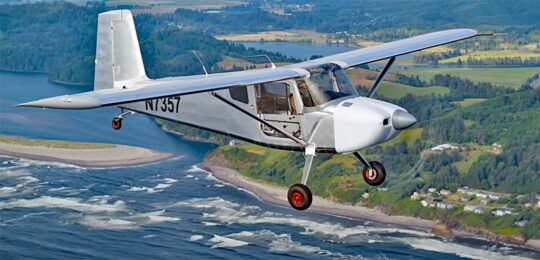
Just recently Sonex unveiled more about a new kit model. The Oshkosh, Wisconsin company has not done two things: they never sought approval as Special (fully-manufactured) Light-Sport Aircraft — although their kit designs can be flown by an aviator exercising Sport Pilot privileges. Neither has Sonex ever made a high wing design. They’re now changing that; here comes “SH.” (below)
Light aircraft builders in the USA, Europe, Australia, Brazil, and South Africa are preparing aircraft I choose to call Mosaic LSA or mLSA. Let’s have a quick look at six new entries.
6 New High Wings
BRM Aero — Bristell has become a well-recognized brand, moving up to be one of the top high-end choices in LSA. Despite a diverse line of low wing designs, B8 is new. It will sold in America by Bristell USA.
B8 is an all-metal, cantilevered high wing with a steerable nose wheel and 49.2-inch-wide cabin. Like most of the others covered in this article, it can carry more and reflects the industry belief that four seaters — or at least higher weight aircraft — are coming.
BRM is ahead of many competitors with their high wing B8 model flying for several months already. This new entry also reflects Milan’s son Martin Bristela taking over the business as Dad retires.
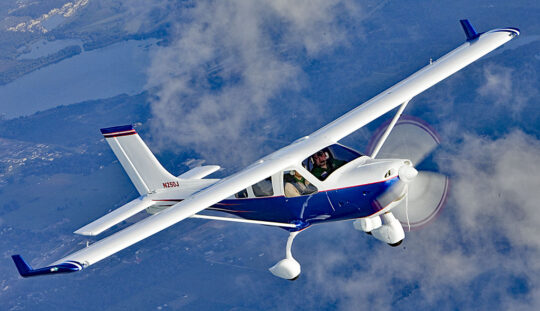
Importer Scott Severen of US Sport Planes is preparing to offer a more capacious version. He may rename it and they may appoint it in special ways but this is an airplane Americans already fly.
What most Yankee pilots don’t know is that Jabiru’s popular J230-D is a variation of the J-400 sold in Australia as a four seater. As such, it already has a tested gross weight well beyond LSA’s 1,320-pound limit. That means the market-proven model is virtually ready for Mosaic and its higher weight allowance.
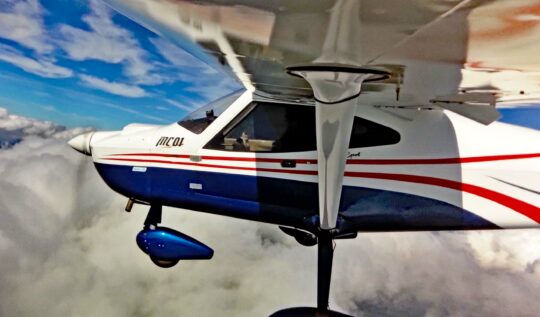
Recently I flew the Rotax 915iS-powered Montaer MC-01. I hope to report on that exhilarating experience soon but my flight shows the powerful engine is worked out and ready for larger aircraft.
A look inside Montaer’s MC-01 shows how roomy it is and the design presently comes with a third door more than large enough to permit entry to an aft seat.
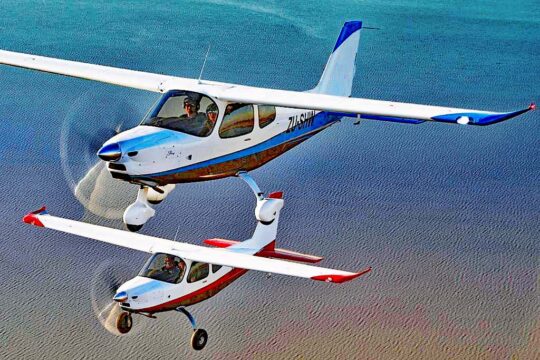
I reported more about this roomy, four-seat-capable design (it did have four seats at Oshkosh 2022). Here’s my airshow article about Sling HW.
TAF has already entered the U.S. market as a kit plane and, like all these bigger aircraft with larger engines, Sling HW is not inexpensive (see price estimates in above article). A fully built model will show these are not 1,320-pound present-day Light-Sport Aircraft. Nonetheless, such mLSA will expand the category.
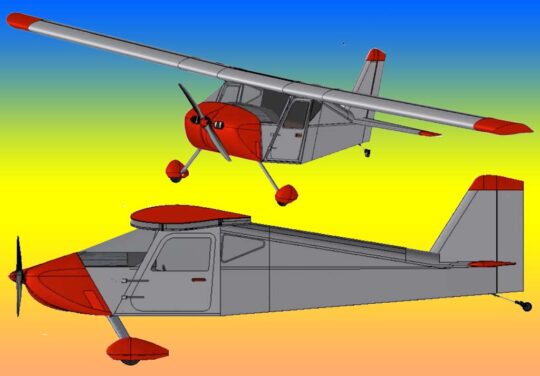
The company said SH features easy entry and exit and offers a “step-in height” that less flexible or older aviators will appreciate. SH will be easily convertible from dual joysticks to a center-mounted control.
Sonex’s SH also offers removeable wings and they released new fuel system information and range estimates. SH will carry 30 gallons of fuel.
Sonex even boasts that SH will offer aerobatic capability. SH has also been designs to allow aerobatics with two persons on board.
Van’s — As the world’s largest kit aircraft supplier, Van’s always commands media attention. When they introduce an all-new, first-ever design, the company can generate many article and videos. Indeed, I wrote this article about RV-15’s introduction at Oshkosh 2022.
I refer you to a thorough article on RV-15 below so I’ll wrap up this review of high wing mLSA to come. However, I am positive the six aircraft just mentioned will not be the only entries.
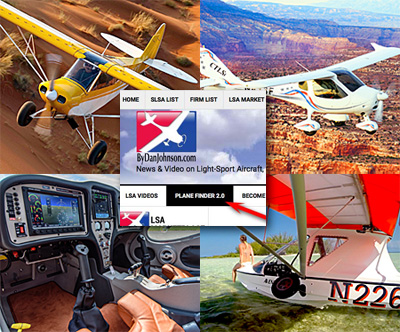
Bigger Yet? — Designs from Flight Design and Tecnam suggest some LSA producers will take this even further with full-size four seater designed expressly for such passenger loads. However, these are not the focus of this website as they may pursue a higher level of government approval than needed for true mLSA types.
More About RV-15
from Flying Magazine
A detailed article from our friends at Flying Magazine provides lots more info on Van’s new RV-15 high wing. Those keen to know more about RV-15 are encouraged to read Jason McDowell‘s article.
Pilots may believe Mosaic appears a long way off. Indeed, I estimate the rule can’t go live before early 2025. In the meantime, as FAA deliberates and as ASTMers create fresh standards, the airframers will keep refining their proposed aircraft. Stay tuned!
ARTICLE LINKS:
- Article on Mosaic, referring to many attendee questions
- Video on Mosaic, from Midwest LSA Expo September 2022 (still very relevant)
- ASTM standards-writing committee (F37 for LSA) — You can join and help!
- Links to all featured companies are available via links at end of article (see “Filed Under”)
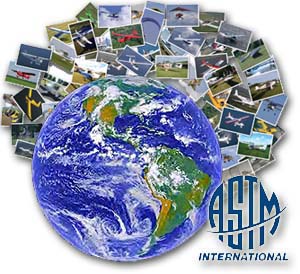
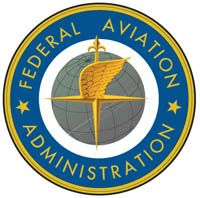
A different FAA group handles pilot privileges and who gets to fly what size aircraft with how many people on board. They are much less involved with ASTM committee work. That is why we have much less information about what the agency plans regarding pilot certification or flight operations.


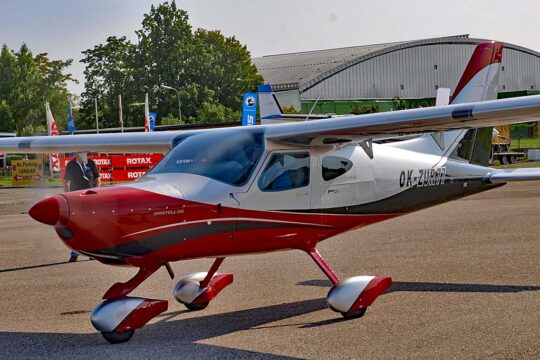
Its March 21st, 2024. What exactly do you think is causing this thing to stall. I was hoping to start planning my flight training again in another month, but at this rate it doesn’t seem possible. This would open up so much more that people even think about. I remember when I went into boot camp and there was a kid that was as fast as the wind could blow. He ended making it to like training day 58 and he was booted out because he ended up having flat feet. That is ridiculous but true. Now the 3rd class medical kind of reminds of that. Some of the disqualifiers are ridiculous to say that someone cant fly when they are very capable of doing so. This needs to come to fruition because there will be a new life into aviation with so many doors opening up. I just wish they would make the rules and come on with it already.
Mosaic is coming, in about one year, and that is right on the original FAA-announced schedule. Development happens pretty fast. Regulations definitely do not (and that may be a good thing). All these LSA — present day models or Mosaic LSA — can be flown without a conventional aviation medical. That would seem to address your primary point, one that is very important to many pilots.
Dan, thanks for all that you and LAMA do for the industry. Something I wish LAMA would consider is pushing the training side of light sport. I live in a medium size city with a class D airport and should not have to drive 100+ miles each way to get light sport training. When asked about light sport training the local FBO told me I should learn to fly “real airplanes” then put me in a Tomahawk with 102 k top speed and a 445 lb. useful load. I let my medical lapse as I’m now 68 yrs. old so the hand writing is on the wall. I hope Mosaic will help in training but nothing is set in stone and several years away. The Tomahawk was wrecked by another instructor so I did not get to finish training. There has to be alot of other people like me who would love to join the aviation community but are locked out by egos and lack of understanding of light sport. If LAMA could help with getting the FBOs on board, it would be a great help. Untill then I will have to stick to my boat. Thanks!
Thanks for the kind words and I appreciate the confidence you’re placing in what I produce.
As you surely have noticed LAMA focuses on the airplane side of the equation. That’s partly because that’s LAMA’s mission but also because the people in FAA aircraft certification are more willing to share what they’re doing. To some extent they must do that, because they need the participation of the ASTM committee, which requires some information if it is to do its job.
The pilot licensure and operating limitations are duties of flight standards, a different FAA agency, which has been far less forthcoming with information. We still hope for good things, per messages given to us from the airplane certification people about what they think the flight standards people are doing. That sounds convoluted, but remember FAA is an organization of many tens of thousands of employees.
All that is to say that I understand you would like access to an LSA for training closer to home. I certainly understand. Since LSA is not even 20 years old, it may just take more time for LSA trainers to become more commonplace. During that passage of time, hopefully some of these FBO people will learn more so they don’t recommend “real“ airplanes simply because they don’t know more about LSA and Sport Pilot.
Ronald, I sympathize with you. I’m located in the Hampton Roads area of Virginia. Even with several larger GA airports around, I’d still need to drive 2-3 hours away to get Light-Sport training or access an LSA aircraft. Hoping the flight standards folks will loosen things up enough to get more people into aviation and create the demand signal so the local schools start to invest in the Sport Pilot market.
One plane I’m hoping will qualify for the new Mosaic LSA is the Diamond DA40NG. What do you think are the chances this plane will be included?
Since the Diamond already has a certificate, it won’t become a mLSA. However, depending on how FAA specifies compliance to their mantra of “easy” to fly, operate, and maintain, then, perhaps DA40 might fall within the envelope for Sport Pilot operation. Honestly, I think that’s a stretch.
Dan, thanks for your perspectives and updates. They are always appreciated. You’ve seen a lot of comments responding to “Why so Glum?” Notwithstanding the history of the FAA as the reason for “this doesn’t look as bad as the past, for those of us that use light sport due to age/physical limitation, the negative announcement at Oshkosh last year after a long wait was disappointing at best. If your forecast is right and you’re in your mid ’70s…it doesn’t bode well. Sure there are folks out there that are flying in their ’80s….but they are likely self-insured. I know a fit, spry 81 year old who was flying warbirds with a 3rd class medical who could still pass the physical, but at 80 his insurance bill tripled. He could not afford it. Just getting older changed my insurance on a light sport by 50%. So two more years…too bad fellows, you might be able to fly a heavier, faster airplane, you just can’t afford the insurance. So the bottom line, the sooner, the better for some of us.
Anyone hearing any rumors, or have any updated info on proposed expansion of privileges for the Sport Pilot Certification? I’d love to be able to take both of my daughters as well as flying at night or IFR.
As I have regularly repeated, all pilot certification and flight operations proposals will come from a group call Flight Standards. This agency within FAA has not been particularly forthcoming about their plans. We will have to see the NPRM to know for sure, but at AirVenture 2022 (so, fairly recently), several FAA personnel told me, “You’ll be happy with this regulation.“ I don’t know precisely what that means but I’ve got my fingers crossed for things such as you’ve described. IFR while exercising the privileges of Sport Pilot might be a longshot, however.
Dan, is there any info about the performance of Montaer in high altitude airports, or places like Arizona where the temperature’s become very high? Weight to power ratios seem similar.
160HP/1300LB 8.125lbs per 1 HP
100HP/855LB 8.5lbs per 1 HP
I don’t know of such operation at higher elevations. I do know it has been operated in Arizona, where I understood there were no issues.
The problem is not really so much about the airframe because I think Montaer’s wing is capable. It’s more about the engine and with a Rotax 915iS on an MC 01, no problem!
Yes that 915 looks awesome. Safe to guess a 912 is less exciting in AZ?
Less thrilling, yes, however, I think the 912iS would do quite well in Arizona.
Great Comments and Answers. Thanks for your hard work Dan, keeping our aviation community informed.
I’ve missed the basic details like gross weight, top speed, horsepower, prop, fuel quantity.
Are any of these basic proposed numbers published for mLSA?
Keep up your great work my friend.
Thanks for the kind words, Donnie! Much appreciated.
I imagine a final system that will be significantly based on wing loading and with some parameters like horsepower (probably 200) and stall (50 knots has been mentioned). The other strong mantra is that a qualifying mLSA must be “easy“ to fly operate, and maintain. That does not mean they can’t be fairly large, or even complex, but they have to be “easy.“ For example, Single Lever Control might get us constant speed-type props but without the Pilot work load. FAA loves stuff like that (who doesn’t?). Industry has proposed language on that challenging “easy“ word that FAA has accepted, but we still don’t have hard information about how they will judge these things. That’s what we’re waiting for in the NPRM, supposedly due out in August, so perhaps at Oshkosh they’ll announce such. We’re all waiting…
Why do you always “forget” to include RANS aircraft??
I have often covered Rans aircraft, including the S-21 Outbound that easily fits in this group. This was not an exhaustive article of every potential mLSA but one focused on newer aircraft in development.
2025?!!!!
My stating “early 2025” is calculated as follows: FAA has said they will release the NPRM in August 2023. Previously on multiple occasions, they have said they need 16 months after the issuance of said NPRM to allow public comment and then to evaluate those comments and make final revisions to the regulation. Add 16 months to August 2023 and you get the tail end of 2024 meaning that Mosaic’s official effective date is likely to be 2025.
The FAA was under a Congressional mandate to complete MOSAIC by the end of 2023. Not just issue an NPRM, but to complete the process – issue a final rule. Why was the FAA allowed to get out of that mandate with no consequences?
Valic point. However, can you think of any other government program that was not completed on time?
Does this mean I might be able to put some back seats and seatbelts in my current Jabiru J230?
No, you cannot. However, if the manufacturer, Jabiru, decides to expand the capability of their aircraft and submits the proper declaration to FAA, which then has to accept the document… then, yes, it’s conceivable your aircraft could get extra capability. This will not happen before early 2025.
Oh, did I mis the part of your email that said: ‘FAA’s Coming Rule Will Create “mLSA” Sector?’ I would like to learn more about the mLSA Sector.
Joe T.
Since I didn’t send email on the subject, I’m not sure of your reference, but you can learn more about this category in numerous articles on this website. I have adopted the moniker Mosaic LSA or mLSA in an attempt to define something that has yet to be defined.
Mosaic, which started out as “Permit to Fly,” began in 2013. It has been 10 years of bureaucratic mess.
Did it take 10 years for the FAA to adopt the EASA rules for what we call LSA? I don’t know. Maybe Dan can answer that question.
Just think how much innovation we could have seen in the last 10 years if the FAA had made the correct decision to make a C-172 class airplane the new LSA standard in 2014.
Rant over.
You are correct that EASA’s Permit to Fly program predated FAA‘s Mosaic, but I don’t think they were linked in any way other than all such bureaucrats share ideas at periodic meetings. FAA has only been working diligently on what is now known as Mosaic since about 2018 after getting a budget increase from Congress, one of the eventual purposes for which was to do something in the area of drone regulation. Unfortunately, that entry of drones into the picture really complicated things and extended the timeline. Drones are no longer part of Mosaic and I think we can proceed with this current regulatory proposal.
I hope so (that Mosaic is just “around the corner” …my words). But the FAA ain’t hit one milestone in the Mosaic effort yet.
But again, I sure wish it would.
Joe Thompson
Dan, Joe T. again.
Let’s assume mLSA actually does happen at this year’s AirVenture. Let’s also assume the LSA specification are expanded to something between a C-172 and a C-182. Finally, let’s assume the ‘revised’ Sport Pilot License will allow the new definition of a mLSA to be flown.
In your expert opinion, what will that do to the prices for existing ELSAs and SLSAs?
I have been watching them rather closely for several months. They don’t seem to be selling well. Just my humble opinion.
So, what are your thoughts on this matter?
Regards,
Joe Thompson
I think the price point depends significantly on which aircraft you examine. Many LSA appear to be selling so well that some suppliers can’t find enough high quality used aircraft for customers that want them. In the long run, I think prices will be lifted for all aircraft. That’s good news for sellers but may increase costs for buyers.
Agreed 150%
Full tanks, pilot and passenger, and bags. Make them go 140 knots and and land at 50-60 knots and there will be endless possibilities. It looks good but skepticism of the FAA is well earned. The FAA could ruin a bag full of puppies under the rainbow.
Even faster than 140 knots would be safe. The things that make a fast plane hard to fly is things like high stall speed or a large difference between best climb and best glide because if the difference is too big like it is in Mooney aircraft then even pushing forward as hard as fast as you can as you can might not bring you to best glide fast enough.
How spin resistant an aircraft is and how easily it goes into a flat spin. How much diherdal it has for stability. How control authority changes based on different kinds of turbulence. How sensitive it is to changes in the CG and how much the CG will change as fuel is consumed. How much pilot workload there is and how forgiving it is to mistakes.
These are the things that really matter for light aircraft. Its top speed in straight and level flight, on its own, really does not have much of an impact on safety, as long as it can cruise slowly as well. If you can go around the pattern at 70kts, then who cares if you can cruise at 190 true at 10,000 MSL at WOT?
Setting a top speed is unnecessary and the only performance specs they should care about are max weight and stall speed. The gap between stall speed and Vne will never be too big due to aerodynamics. A low stall speed will naturally limit max speed to something sensible. So will a weight limit, because you can only get so much thrust even with the lightest turboprops before you need to use something heavier and no longer be considered a light aircraft.
If the FAA actually understood this (at least the parts of the FAA that made the decisions), we would be in a much better place.
Well, you are not wrong but you cover way more ground than I did. My point was simply that this gets into where my mission will likely go. Hopefully they do all the things they need as you mention and get us flying reasonably fast aircraft soon.
Will the rules being changed allow any older aircraft like the C-150 or 172 be flown as a LSA?
Yes, this is a good possibility. This has been discussed in the referenced (and linked) video as well as in previous articles.
I’d be interested to hear your thoughts on existing LSAs with a 1,320 pound max vs. any that actually tested over that and if those manufacturers will or could change the published aircraft limitations post MLSA release…
Those designs that have already been tested beyond 1,320 pounds (plus safety margins), and who have the documentation in satisfactory form to make their declaration can probably increase their weight. However, certainly at first, FAA may watch very carefully to be sure testing meets the standard and documentation satisfactorily proves this.
Dan thanks for the update.
Dan, please provide price of the 750 kit. Thanks.
I’m not sure of your request, Larry; I don’t know what you refer to in this article as a “750 kit.”
On the assumption that you want info about Zenith Aircraft‘s CH-750, use the link to contact them.
Keep being upbeat, as for me, age 68 LSA Pilot just before Oshkosh 2022 when Biden’s FAA popped the Mosaic balloon. By now I was hoping to be flying aircraft below 3300 pounds that my generation all trained in, aka C-150s, Piper Tomahawks, AA-1 Grummans, maybe a Skyhawk or Warrior, but NO, by the time a watered down FAA Mosaic is law I will be an uninsured 88 year old wearing Depends eating green jello with carrot slivers.
Thanks for nothing FAA.
Not sure why you think your going to be in that kind of shape but I have a friend who at 99 years old flew his EAB that he built at 89 years old from Texas to California and back solo. Patience is key, but as a senior right behind you, time is of essence for some of us.
The FAA is your enemy not your friend. Just look at how far Europe is in regards to aircraft compared to us.
What is an mLSA?
“mLSA” is shorthand for “Mosaic LSA,” the next (coming) category of Light-Sport Aircraft.
MLSA is short for MOSAIC LSA
Thanks for keeping us abreast of the latest, Dan.
Billy Nolen, the CEO of the FAA testified before Congress yesterday. One of the Representatives ask him if he really thinks that one of the top priorities of the FAA should be tackling Climate Change and diversity, equity and inclusiveness. He responded by saying that , yes, he sure does!!! It blew me out of my chair when I heard this. Maybe this is what is slowing them down to getting us a common sense LSA rule.
These federal officials have to make these statements if they want to keep their job in the current administration. SEC, the Fed, and many other federal agencies (probably all of them, who can know?) must toe the line, or else. FAA boss Nolan is only in his position temporarily but it would take an extraordinary replacement to resist such GOVspeak. These agencies can barely keep up with their current duties much less take on ones they know little about. What solves this problem? A bigger FAA (or fill-in-the-government-agency) budget, of course. We’ve already seen this for the IRS.
Thank you for this reply. I have often lamented the wokeness and have never really thought about the pressure to look woke in order to keep your job.
That’s so crazy! At least climate change is tangentially related to aviation, but diversity, equality and inclusiveness? This makes me ashamed to be a liberal.
Well, at least there is one now. Shameless and liberal have been synonymous forever. 🙂
This is such an odd sentiment to me. Most of the discussion on this thread regarding sport pilot licensure and medical is a diversity, equity, and inclusiveness issue. Don’t we want the FAA to have sensible policies around allowing older pilots, pilots who have sought help for minor medical issues, and others who are currently excluded from flying for poor reasons to be able to fly? I’m glad to know they they are (claiming to) prioritize DEI since most of the licensure questions are DEI issues.
That’s not what people mean when they’re using these words to virtue signal. What they want is more pilots of color and they don’t give a damn about pilots with otherwise disqualifying medical conditions. Inclusive means changing the name cockpit to flight deck so it doesn’t “exclude” women (because apparently if a word has “cock” in it, then it must be sexist and therefore non-inclusive).
These are actually things that are being attempted. Already a lot of money has been put into pointless attempts at being more inclusive by changing the “Airmen” in NOTAM to “Airmission” and changing “unmanned aircraft” to “uncrewed aircraft”. As if a woman can’t be an airman and can’t man an aircraft just because she’s female…